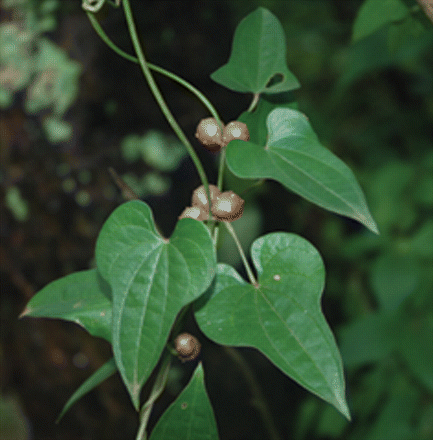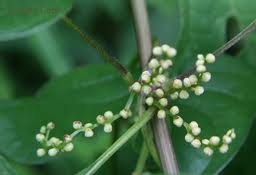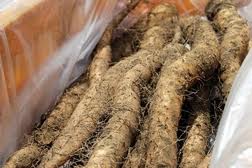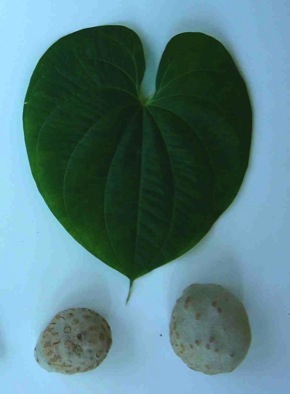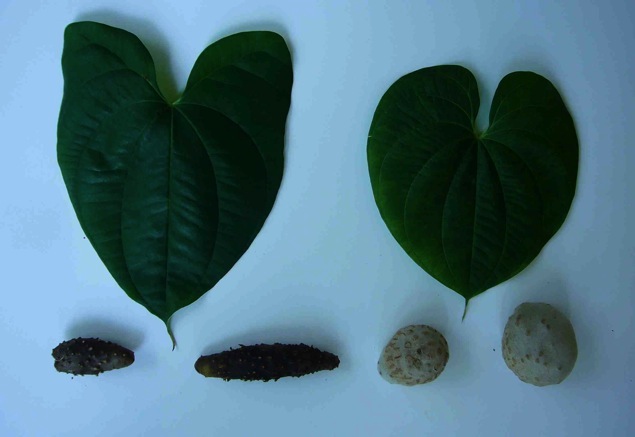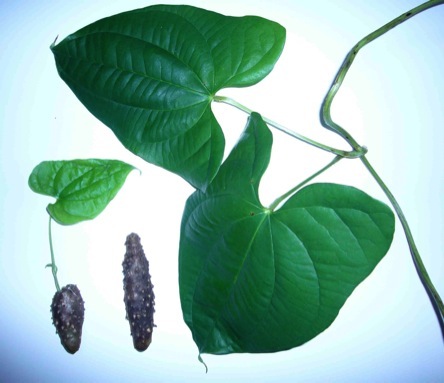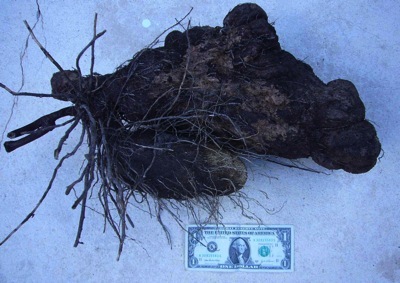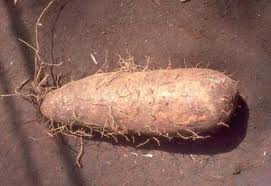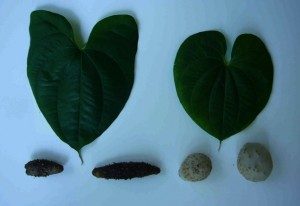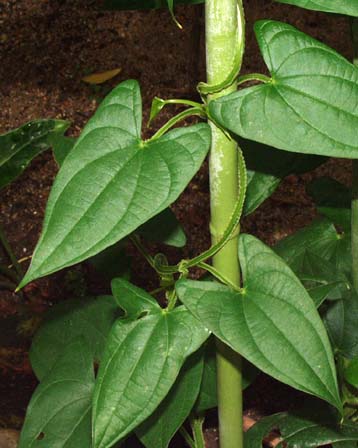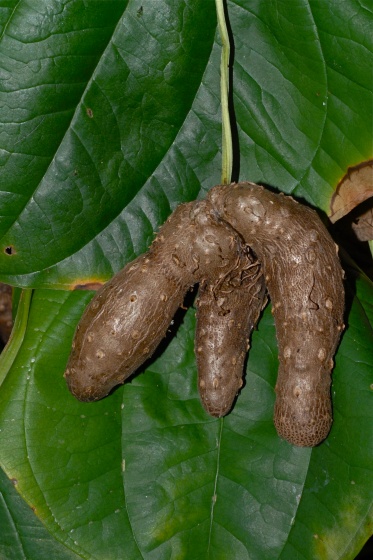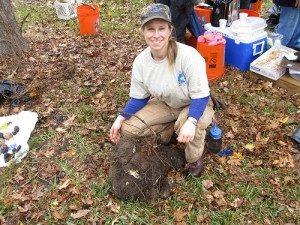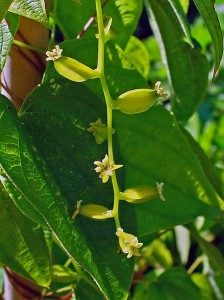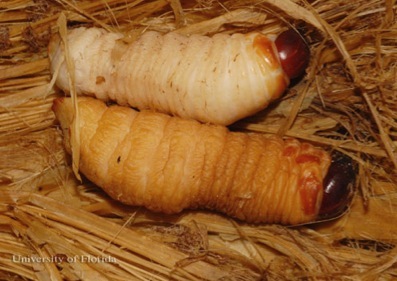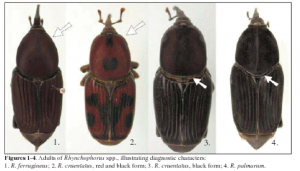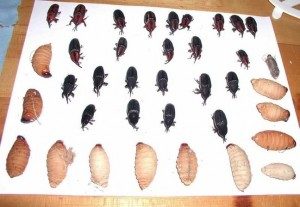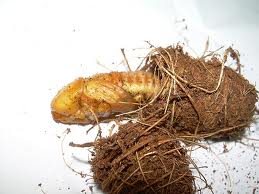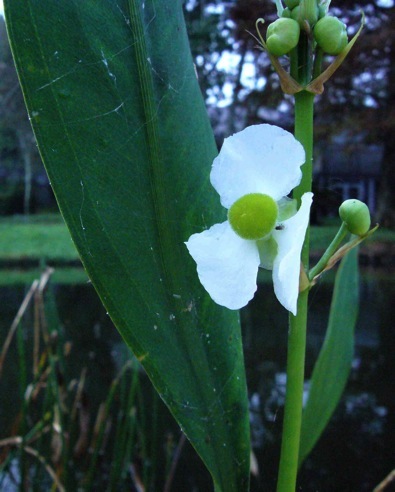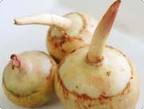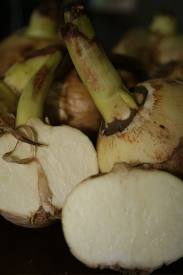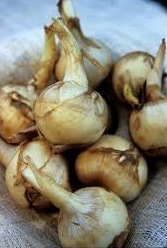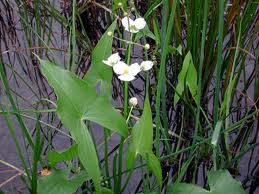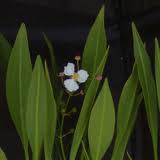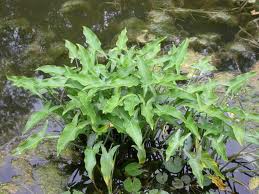Dioscorea Polystachya: Yam C
Just like Rambo movies, there is Yam A, Yam B and, yes, a Yam C, the Chinese Wild Yam or the Cinnamon Vine yam, either way we get Yam C, botanical name, Dioscorea polystachya aka D. oppositifolia (Dye-os-KOH-ree-uh or in Greek thee-oh-skor-REE-uh) [op-os-i-ti-FOH- lee-uh]. Dioscorea oppositifolia only grows in India, where I presume it is eaten. D. polystachya is the one growing in North America. D. oppositifolia is called by some websites D. batata. Regardless, the accepted name for now for the Chinese Yam is Dioscorea polystachya
In some ways Yam C (Dioscorea polystachya) resembles both Yam A and Yam B (Dioscorea alata, D. bulbifera.) It would almost seem to be a composite. And, yes it has a very edible root and air potatoes. It’s fairly easy to identify, if you know how your three yams differ. A review:
Yam A, Dioscorea alata, (uh-LAY-tuh) the winged yam, has a very square stem, stem edges can be tinged in purple, it twists lower left to upper right (Z-twist) its leaves are in pairs and more arrow shape than heart-shaped. Its in-the-air bulbils are cylindrical or misshapen lumps, dark brown. The vine can grow to 50 or 60 feet. Its underground root should be cooked once. Its in-the-air bulbils are considered edible but not too palatable. Yam A is, officially, in three southern states and Puerto Rico.
Yam B, Dioscorea bulbifera, (bul-BIFF-er-ah) the “air potato vine” has a thick round stem, green. It twists lower right to upper left (S-twist) its leaves are round-shaped heart and singular, alternating. The vine can grow to 80 feet. In-the-air bulbils are round, either tan and smooth, or dark brown with tan pimples. Its underground root needs to be cooked twice, or more and then try carefully. If still bitter discard. Its bulbils are generally not considered edible. Read more about that in the specific article on Yam B. D. bulbifera is in five southern states, officially, and Puerto Rico.
Yam C, Chinese Wild Yam, or Cinnamon Vine, the Dioscorea polystachya. Its deeply lobbed leaves can be round-heart- to sword-handle shaped to arrow-heart shaped, but to me they resemble a cartoon outline of a rat’s head, with a long nose, large ears. Better still, they resemble the leaves of the Smilax bona nox. Its leaves
can be opposite on the lower stem, alternating farther up, or arranged in a whorl of three. The vine is round like the D. bulbifera but wiry, it twists lower left to upper right, Z-twist, like the D. alata, to 15 feet. If it blooms its flowers smell of cinnamon. Its leaf margins, petioles, and stems can be tinged reddish purple. The root should be cooked. Some authors say it can be eaten raw but with so many varieties possible that would not be advised. Its in-the-air bulbils, often pea size sometimes to golf ball size, are edible and can be cooked up like little potatoes. Each vine produces about 20 bulbils a year. Rats like them, and other small animals. New leaves have a bronze tint which keeps it from being confused with the similar looking Morning Glory. In northern climates D. polystachya is the only local yam.
Yam C, came to the United States as a food and an ornamental crop in the 1800s. In a 1970 survey it was not reported escaped from cultivation but by 1986 was reported root loose and fancy free. Unlike Yam A and Yam B, Yam C, the D. polystachya, apparently gets around. By 2002 it was reported in 24 states from Vermont south to Florida, west to Illinois and Texas. It’s also been reported in two more since, Wisconsin and Arizona, putting it in 26 states as well as Washington DC, but not Puerto Rico. In Texas it has become a naturalized “noxious weed.” That title might change if food prices keep rising. In Tennessee it is a Rank-1 Severe Threat Species. It is becoming an increasing problem in southern Ohio where it is controlled by intense mowing. It is also a favorite ornamental, so your first sighting of Yam C might be inside in the middle of winter in a container.
One-year-old roots weigh about 3 ounces, two-year-old roots, a pound. The root, in good soil, can grow up to three feet long and weight up to five pounds. Its flavor is between a sweet potato and a regular potato. It is 20% starch, 75% water, 0.1% B1, and has 10 to 15 mgs vitamin C. The most common use is cooked like a potato. The Japanese prefer it raw. However, varieties can differer and I do not recommend you eat it raw. Cook it, or experiment with it raw very carefully.
Yam C, Dioscoria polystachya, is also called the aformentioined D. oppositifolia but I am not convinced they are exactly the same plants which is why I do not recommend the D. polystachya be eaten raw. Dioscorea honors Pedianos Dioscorides, a Greek physician of the first century AD whose book on medicinal herbs Materia Medica was the standard for nearly 2000 years. Polystachya means many flower spikes. Batata is a Caribbean native word for “potato” and oppositifolia means opposite, as in the leaves. Remember, D. polystachya in North America, D. oppositifolia in India.
Green Deane’s “Itemized” Plant Profile
IDENTIFICATIOIN: Dioscorea polystachya: ”Chinese Yam, Cinnamon Yam Vine.’ Large lance-shaped leaves, opposite on lower or young stems, alternating higher up, can have whorls of three, climbs from lower left to upper right. In-the-air bulbils pea to golf ball size, usually smaller than larger. Long, skinny underground root to five pounds.
TIME OF YEAR: Fall. In Florida vine dies December through February making locating difficult unless you mark it.
ENVIRONMENT: Yams do well in sun or partial shade and prosper with ample rainfall. They require good drainage, and therefore, are often planted on mounds or ridges. This one likes to be watered.
METHOD OF PREPARATION: Underground roots, cooked peel, then sliced or mash, bake or chill it and use in a “potato” salad. Some reportedly use it raw. Proceed with caution. Try a very little first and wait a day. In-the-air bulbils cooked, usually boiled like potatoes.
HERB BLURB
Externally the raw root has been used to speed up healing because it contains allantoin, a cell proliferant. Leaf juice can be used to treat snake bites and scorpion stings.
28 Feb. 2006: Abstract: ”A water extract as a viscous solution was obtained from the yam Dioscorea opposita tuber mucilage tororo, and its functional properties were demonstrated. The protein content was about 280 g/mL extract, and the main protein bands with an MW of 33 kDa without 2-mercaptoethanol (2-ME) and 31 kDa with 2-ME were detected by SDS-PAGE. The water extract possessed high antioxidative activity and scavenging activities against superoxide anion and hydroxyl radicals. However, it showed no inhibitory activity against angiotensin I-converting enzyme. The yam tuber contains relatively high contents of vitamins, different micro- and macroelements, enzymes, and dietary fibers. The yam D. opposita tuber will be increasingly regarded as a health-promoting food.”

